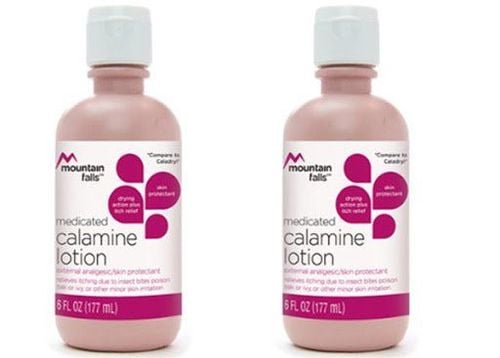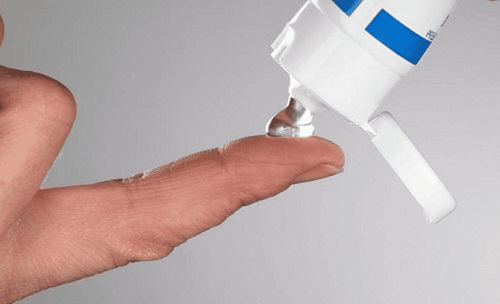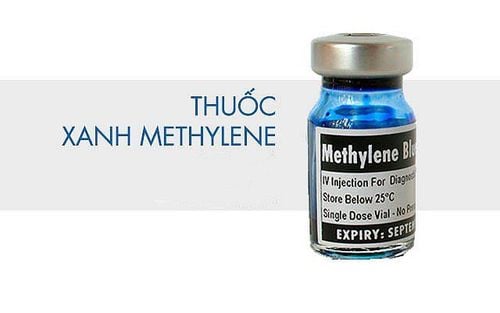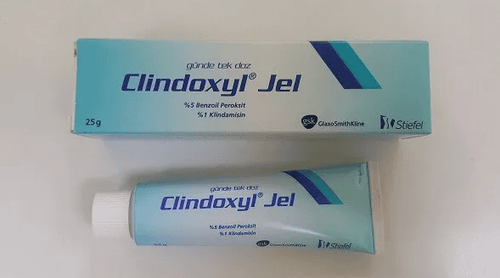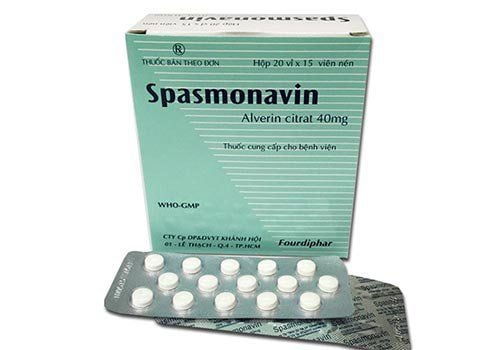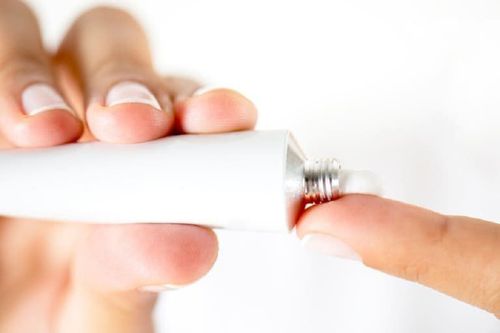This is an automatically translated article.
Acnemine is a topical drug containing Adapalen with anti-inflammatory effects, indicated in the treatment of acne. Let's learn more about Acnemine through the article below.1. Pharmacology of the drug Acnemine (Adapalen )
Acnemine is the brand name of the active ingredient Adapalene 10mg. Adapalene has the chemical name 6-[3-(1-adamantyl)-4-methoxyphenyl]-2-naphthoic acid, is soluble in tetrahydrofuran, very slightly soluble in ethanol, and almost insoluble in water. Adapalene is a third-generation retinoid with anti-inflammatory activity. It is as effective as tretinoin, however, studies have shown Adapalene to be safer.Adapalene has a similar mechanism of action to tretinoin in binding to nuclear-specific retinoic acid receptors, but Adapalene does not bind to cytoplasmic receptor proteins as tretinoin does. Using adapalene on the skin has an anti-acne effect, but it can also cause abnormalities in the process of keratinization as well as differentiation of the epidermis.
In humans, Adapalene is poorly absorbed through the skin, used to treat local skin lesions. Adapalene is most widely distributed in the liver and some other tissues. The metabolism of Adapalene is not clear, mainly the drug is metabolized by O - demethylation, hydroxylation and conjugation pathways. Adapalene is eliminated mainly via the biliary tract.
2. What are the uses of Acnemine?
Acnemine is used for the topical treatment of acne on the face or acne on the chest and back, usually indicated for patients 12 years of age and older. Acnemine is effective in the treatment of acne with the following characteristics: Acne with many comedones, papules, pustules.3. Dosage, how to use Acnemine
Acnemine is used topically, once a day in the evening before going to bed. Before applying the medicine, it is necessary to clean the acne-affected skin and dry it thoroughly. Then apply a thin layer to the acne-affected skin, the dose of Acnemine for each application is about a green pea.If there is no improvement after 12 weeks of treatment, Acnemine treatment should be reevaluated.
4. Contraindications of Acnemine
Acnemine is contraindicated in people who are hypersensitive to Adapalene or any of its ingredients.5. Side effects
The most common side effect of Acnemine is skin irritation.Multicenter controlled study of signs and symptoms of local skin irritation in 258 acne patients who used adapalene once daily for 12 weeks, more than 1% of patients had related reactions. Importantly, the majority of cases are mild to moderate, occurring early in the course of treatment and decreasing thereafter. Recorded symptoms include: Dry skin (14.0%), skin discomfort (5.8%), itching (1.9%), peeling (1.6%), and sunburn (1.2%). Other conditions such as: Acne flare-ups, contact dermatitis, eyelid edema, conjunctivitis, erythema, pruritus, skin discoloration, rash, and eczema are adverse reactions seen in < 1% of patients. core.
Besides, the use of Adapalene on some special sites can cause serious allergic and hypersensitivity reactions. In addition to skin symptoms such as itching, skin rash, urticaria, facial edema, eyelid edema, lip edema, patients may have chest pain, difficulty breathing, ... when using this drug.
6. Drug interactions
Other products or topicals: Adapalene has the potential to cause local irritation in some patients when used concomitantly with topical skin products such as soaps, abrasive cleansers, and cosmetics. Strong drying of the skin, the product has a high alcohol content. Particular caution should be exercised when using preparations containing sulfur, resorcinol, or salicylic acid when used in combination with Adapalene.7. Be careful when using Acnemine
Pay attention to avoid letting Acnemine come into contact with the mucous membranes as well as the skin around the eyes, lips, mouth, and nasal cavity. Do not apply the medicine to broken skin or eczema. A slight burning and stinging sensation may occur transiently after application. Patients taking Acnemine need to avoid sun exposure, possibly using a moisturizer to reduce the sensation of irritation or dryness. Acnemine should be discontinued as soon as a severe hypersensitivity or irritation reaction occurs.UV light and environmental exposure: It is necessary to minimize sun exposure during the use of Acnemine. People who are often exposed to the sun or are sensitive to the sun, should use extreme caution when using Acnemine as well as medicines containing the ingredient Adapalene The use of sunscreen and protective clothing Protecting the skin areas being treated with Adapalene is essential when sun protection is not possible. Local skin reactions: Some skin signs and symptoms such as erythema, scaling, dryness, and stinging/burning have been reported with the use of Adapalene. These manifestations occurred mostly during the first four weeks of treatment, were mostly mild to moderate in severity, and generally subsided. Depending on the severity of these side effects, patients should be instructed to use a moisturizer, reduce the frequency of adapalene application, or consider discontinuing use. Avoid contact of Acnemine with eyes, lips, corners of nose or mucous membranes. Do not apply the product to scratched, eczematous or sunburned skin.




